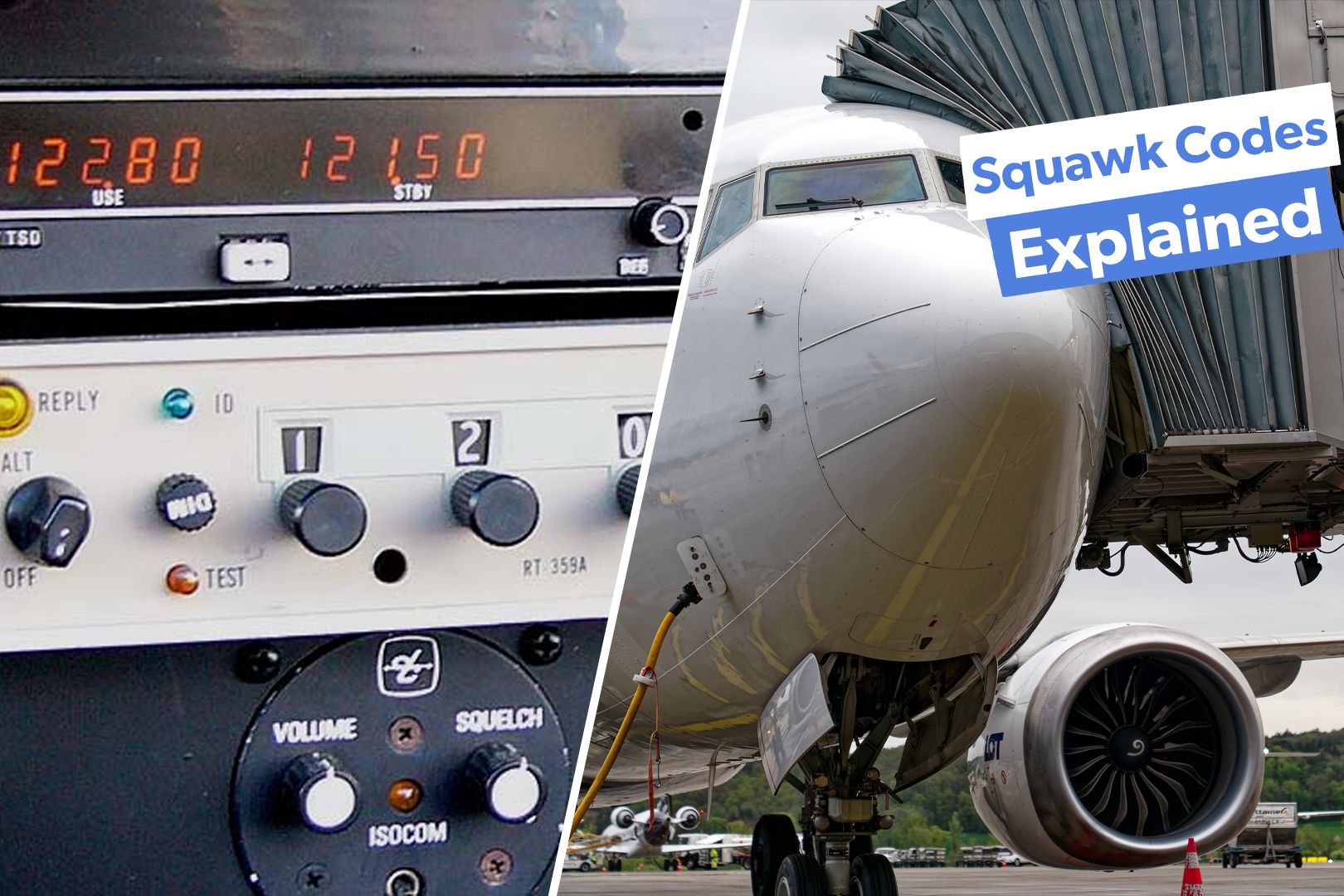Summary Squawk codes are essential in aviation for communication; they consist of four digits between 0 and 7. Squawk 7700 signals an emergency situation on board the aircraft, indicating a serious issue. Emergency squawk codes like 7500 and 7600 are used for hijack or lost communication scenarios, helping controllers provide necessary aid.
Squawk codes are four-digit codes that are used for communication between the aircraft during flight and the air traffic control (ATC) personnel. The code consists of four digits between 0 and 7. Unique codes allow pilots and controllers to establish efficient communication during various situations related to aircraft safety, the environment, and others.

Squawk codes can be changed mid-flight depending on the circumstances. A Squawk 7700 code indicates an emergency onboard the aircraft. It may be due to technical, environmental, or medical issues that result in an emergency situation.
The Squawk 7700 can either be instructed by the ATC or can be inputted into the transponders by pilots. With the emergency code activated, all controllers (including ground controllers) are aware that the aircraft is dealing with an emergency situation. Ground controllers can alert emergency crew and keep the staff on standby before the arrival of the aircraft.
What is a squawk code? Squawk codes are used to provide effective communication between air traffic control and aircraft. A squawk code is a four-digit number assigned to each aircraft that aids in identification. This will show up on the controller's screens, along with vital flight information such as altitude and speed.
Pilots enter the squawk code into the aircraft transponder. This then communicates with ground equipment to display the aircraft information. Usually, an aircraft will keep the same code for the duration of a flight, but it may be changed by other airports or in a particular airspace.
If you are wondering where the term "squawk" comes from, it originates from the Second World War. At that time, basic systems were developed for an aircraft to identify itself to ground controllers - essentially to let them know if the aircraft was friendly or an enemy aircraft. This became known as the "Parrot" system, with the term "squawk" used to refer to the communication between them.
Get the latest aviation news straight to your inbox: Sign up for our newsletters today. Squawking 7700 in an emergency Squawk codes are assigned to a flight before departure. The four digits can be between zero and seven - giving 4,096 possible combinations.
Reserved codes are used in particular situations when an aircraft wants to communicate something to ATC urgently. The most well known of these is the code 7700. This is used to indicate an emergency of any kind.
A pilot will enter this when in an emergency situation - either instructed by ATC after declaring an emergency or without communication if there is no time. This will clearly inform all tracking ground controllers that the aircraft has a serious issue onboard and should be given appropriate assistance. This could include any 'Mayday' situation, such as engine failure, pressurization problems, other technical problems, or urgent medical emergencies.
Squawking 7700 will allow ATC to prepare for a quick landing, allowing controllers to inform nearby aircraft and clear any runways needed, as well as inform the authorities of any other support necessary (such as fire services or an ambulance). Having such a code available is very useful. It not only advises ground operators clearly of the problem, but it also provides a quick way for pilots to communicate.
A British Airways A320 diverted back to LHR following a technical malfunction, with passengers reporting odd smells in the cabin. Every emergency is different, and there may not be much time for discussion. Pilots are trained in an emergency to "Aviate, Navigate, Communicate" - in that order.
Making sure the aircraft is flying correctly is the top priority. Of course, communication (including with ATC and internally) is an important but lower priority in an emergency. Having a fast and clear transponder option can be useful.
Other reserved codes While 7700 may be the special squawk code we most often hear about, there are others. They serve the same purpose - to provide easy notification to anyone monitoring the aircraft of the situation. These are all (including 7700) defined by the International Civil Aviation Organization (ICAO) .
There are two other emergency squawk codes. Code 7500 is used to indicate a hijack, and 7600 to notify that the aircraft has lost communication with ATC. Both of these are, of course, very useful in a situation where radio contact cannot be maintained.
ATC will still be able to provide the required services and priority assistance. In the event of lost communication, light signal backups can be used as well. Code 7500 may also allow pilots to swiftly inform ATC of a hijacking without notifying the hijackers onboard or as soon as they are aware of such a situation.
Codes are not just used for emergencies. There are many other reserved codes assigned by ICAO. These include codes for military operations, search and rescue, and intercept flights.
There are also codes for specific flights, such as glider operations and parachute drops. Recent incidents involving Squawk 7700 emergencies Squawking 7700 is not rare since pilots choose to do so for any emergency that requires swift assistance. In late December, a British Airways Airbus A320 returned to London Heathrow due to technical issues , with passengers reporting a burning smell in the cabin.
The landing was precautionary and all safely returned to the origin airport. In November, an American Airlines Boeing 787-9 diverted to Glasgow while flying from Frankfurt to Dallas-Fort Worth. Once again, passengers noted a strong burning odor from the cabin, and the pilot requested an immediate landing at the closest airport, which was Glasgow.
This time, the aircraft stopped on the runway first before being towed to the gate. Once more, no passengers were injured and the flight landed safely. Squawk codes are a useful means of communication.
.



















